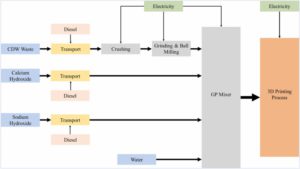Maintaining a lush, green lawn is the dream of every homeowner. A well-kept lawn not only adds to your property’s curb appeal but also provides a perfect spot for outdoor activities and relaxation. One of the most critical components of a healthy lawn is fertilizer. Applying fertilizer is essential for maintaining the nutrients your lawn needs to thrive.
However, it’s not as simple as just sprinkling fertilizer on your lawn. You must follow essential dos and don’ts to ensure you get the best results from your efforts.
In this article, we’ll explore the critical dos and don’ts of applying fertilizer to your lawn, offering expert insights and practical tips to help you achieve a lush, healthy lawn. So, whether you’re a seasoned lawn care enthusiast or a beginner, read on to discover the best practices for fertilizing your lawn.
Do: Test Your Soil
Soil testing is the first step in determining the type of fertilizer your lawn needs. It provides valuable information about the pH level of your soil, which affects the availability of nutrients for your plants. It also tells you the levels of essential nutrients like nitrogen, phosphorus, and potassium, which are necessary for healthy plant growth.
With soil testing, you can avoid over-applying or under-applying fertilizer, leading to nutrient imbalances and damage to your lawn.
Different types of soil tests are available, but the most common are the pH test and the nutrient test. The pH test measures the acidity or alkalinity of the soil, with a range of 0-14. A pH of 7 is neutral, below 7 is acidic, and above 7 is alkaline.
Don’t: Fertilize New Plants
When it comes to new plants, it’s essential not to fertilize them immediately after planting. Newly planted grass or plants are vulnerable and need time to establish roots. Applying fertilizer too early can damage the new roots and harm the plants.
It’s best to wait until the roots have been established before applying fertilizer. They need to take time to absorb nutrients from the soil and establish a strong root system. You can apply fertilizer once the plants are older to support their growth.
Don’t: Put Too Much Fertilizer
Over-fertilizing can cause excessive growth, making your lawn more susceptible to pests and diseases. It can also lead to nutrient imbalances, which can affect the overall health of your lawn.
To avoid over-fertilizing, following the recommended application rates on the fertilizer package is important. Most fertilizers come with instructions on how much to apply per square foot. Measuring your lawn accurately is crucial to determine how much fertilizer you need to apply.
It’s also important to avoid fertilizing during drought conditions or when the ground is frozen. Fertilizing during these conditions can lead to nutrient runoff, polluting nearby water sources.
Do: Dispose Carefully
When disposing of fertilizer, it’s essential to do so carefully. Unused fertilizer should be stored in a cool, dry place away from children and pets. It’s also important to dispose of unused or expired fertilizer properly.
Never dispose of fertilizer in the trash or pour it down the drain. Fertilizers can be harmful to the environment and can contaminate water sources.
The Bottom Line
Applying fertilizer is essential for maintaining a healthy lawn. However, you must be super careful to ensure you get desired results.
Using the right fertilizer will help you achieve a lush, healthy lawn you can be proud of. When choosing a fertilizer, look for one with the essential nutrients your lawn needs. It’s also essential to choose a fertilizer that matches the needs of your soil type and plant species.
With the right fertilizer and proper application techniques, you can enjoy a beautiful lawn that adds value to your property and provides a perfect outdoor relaxation and activities spot.





Be First to Comment